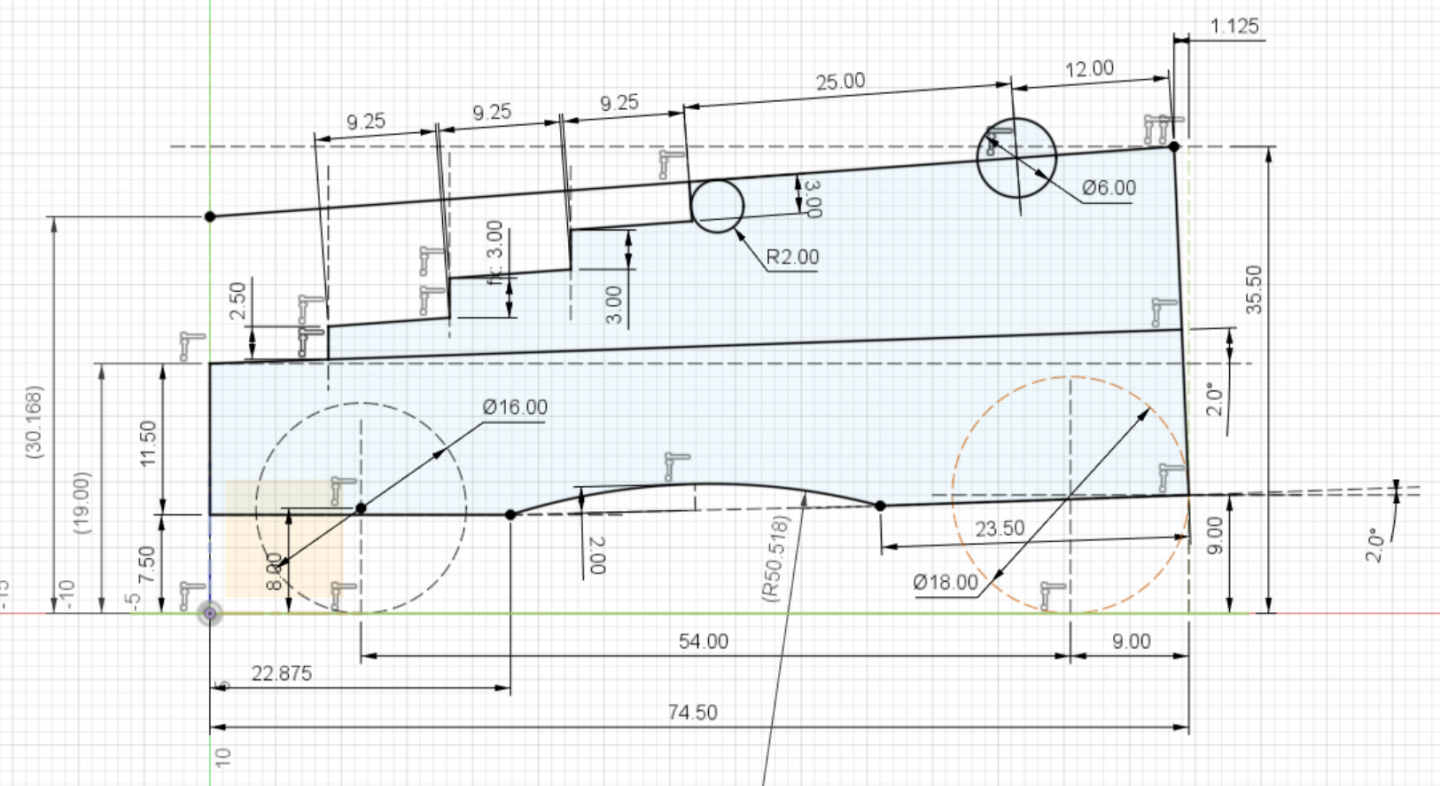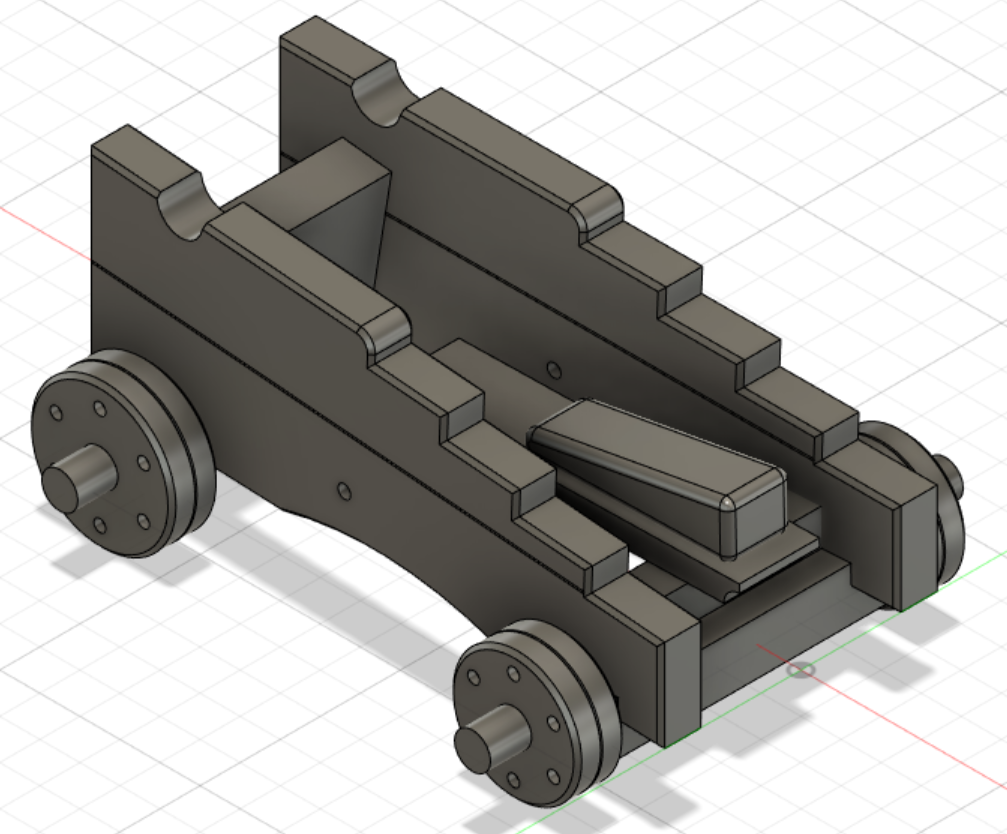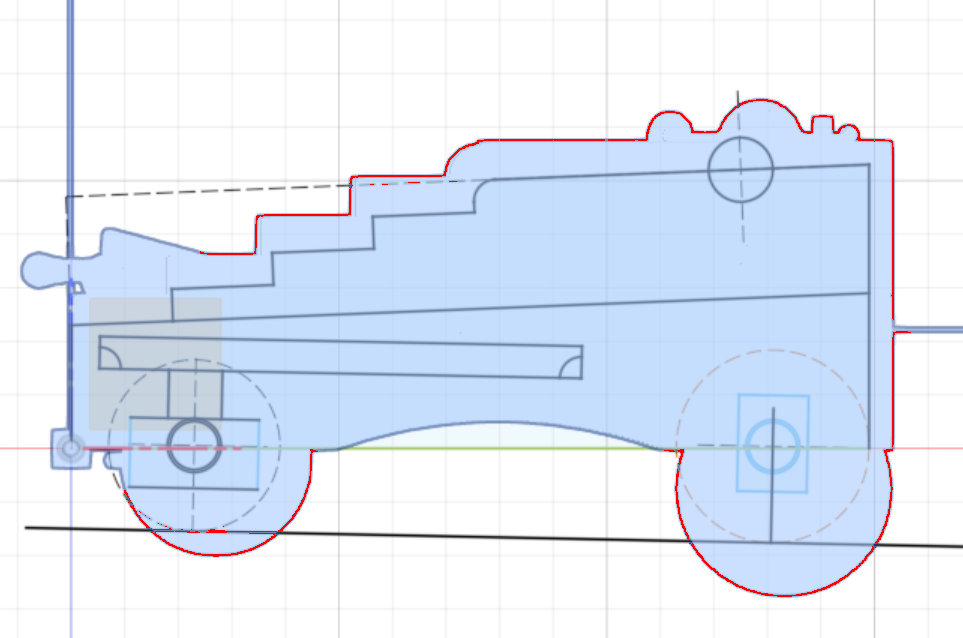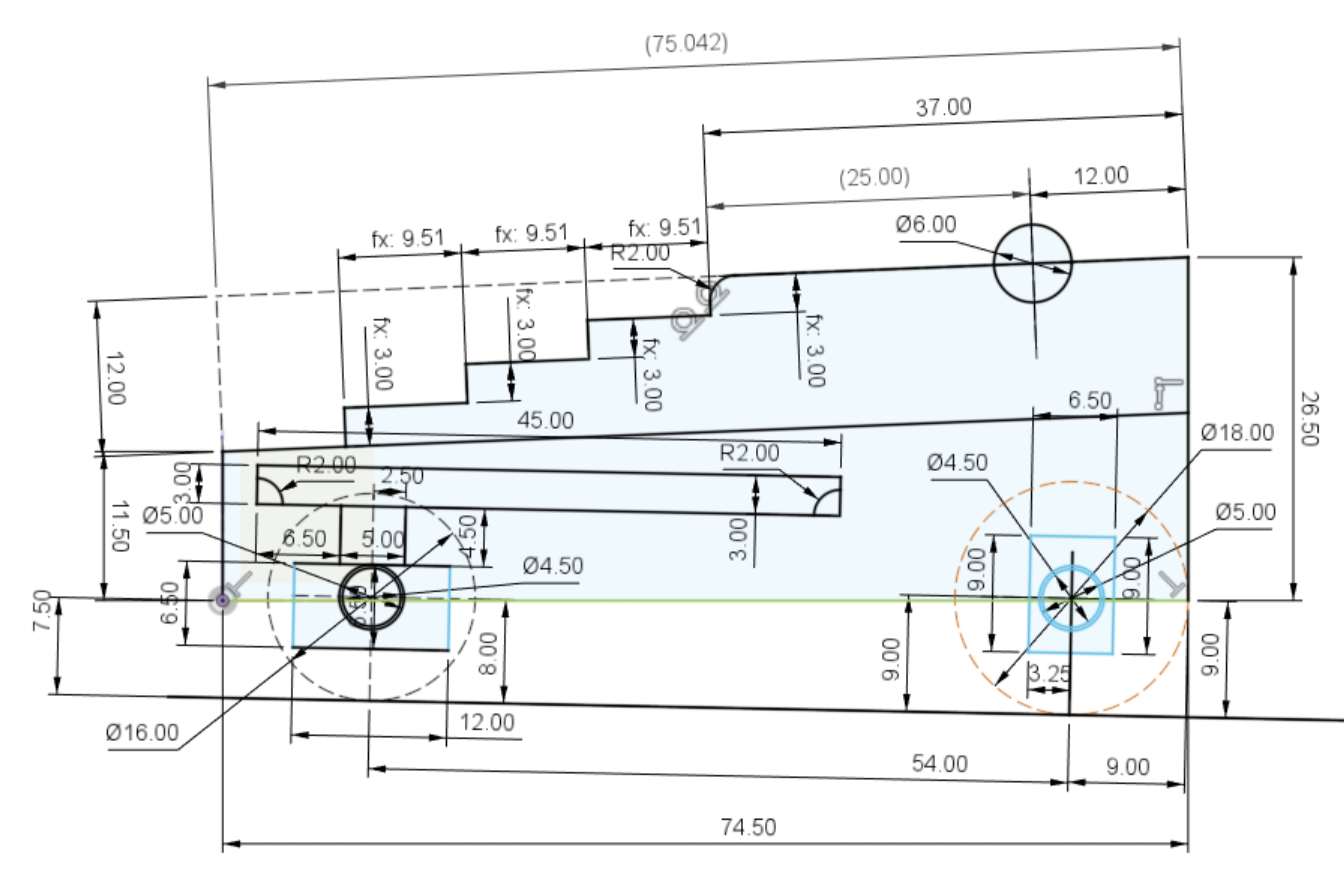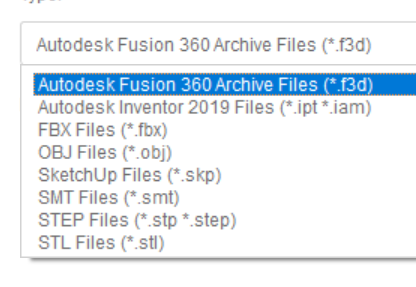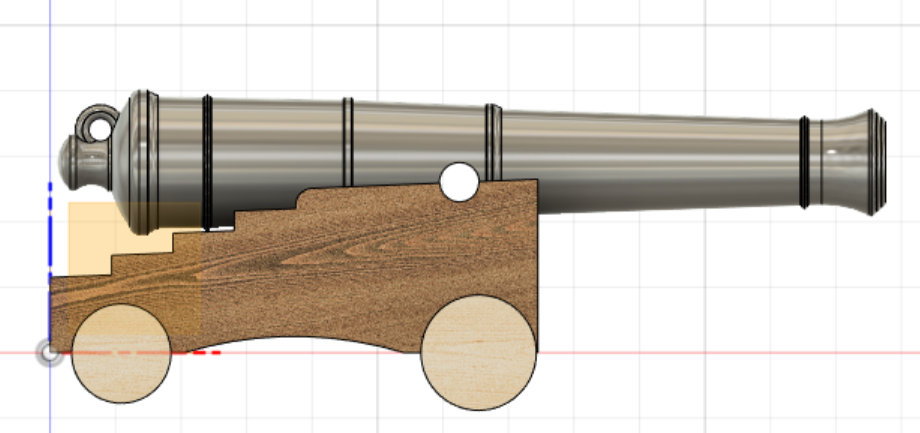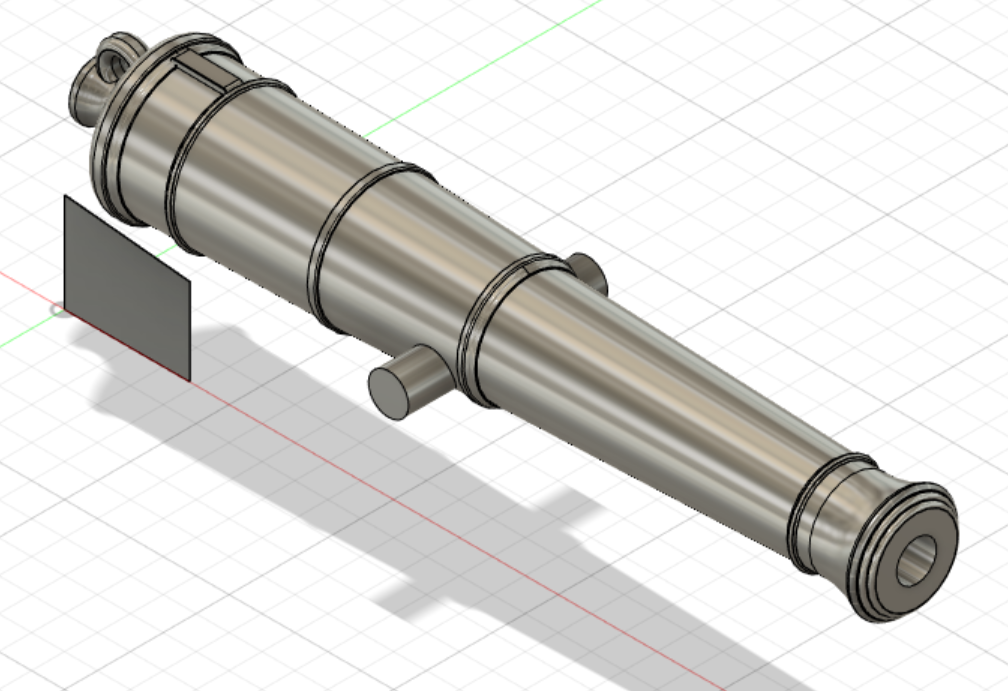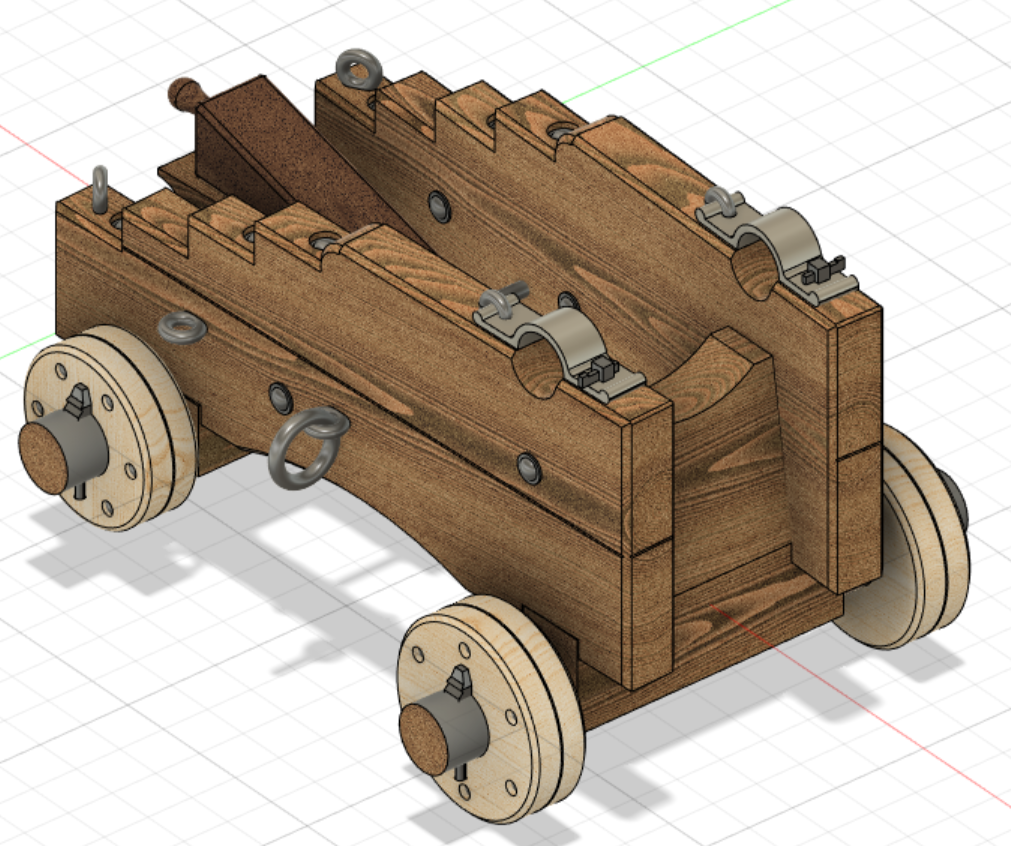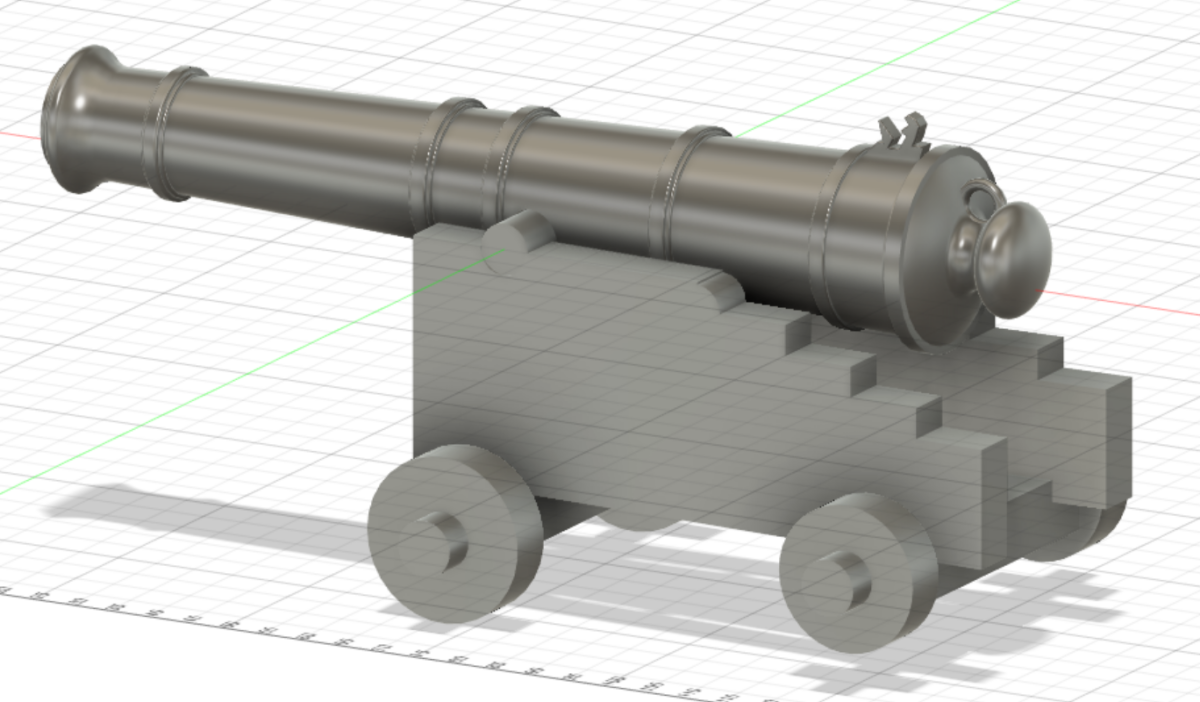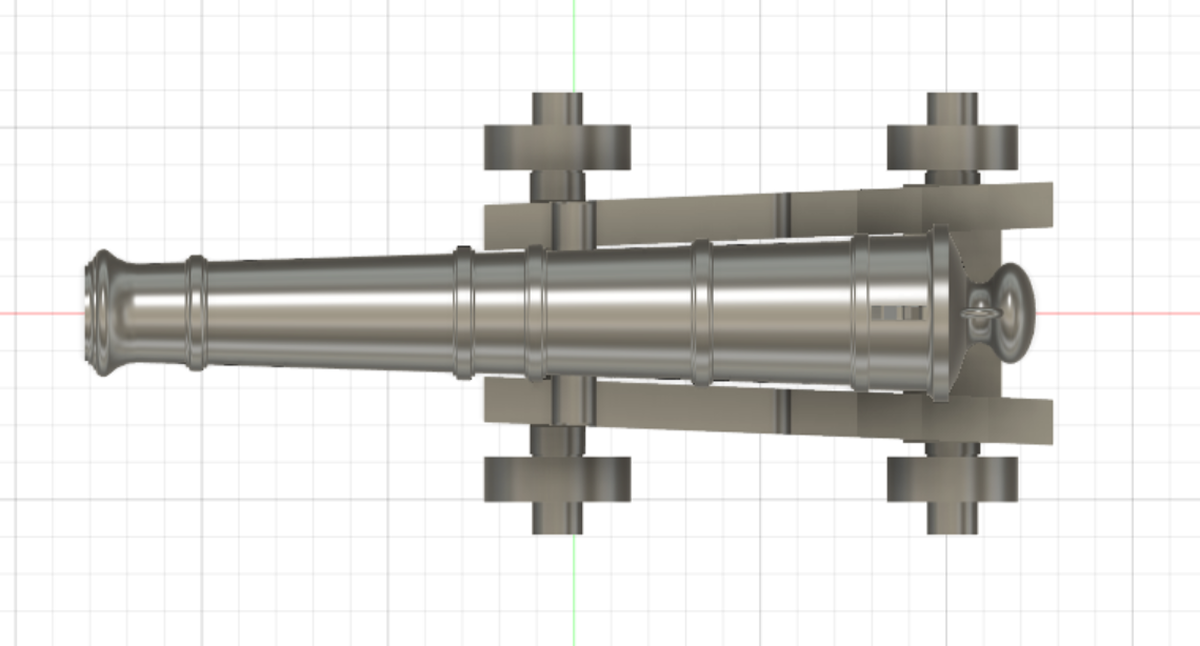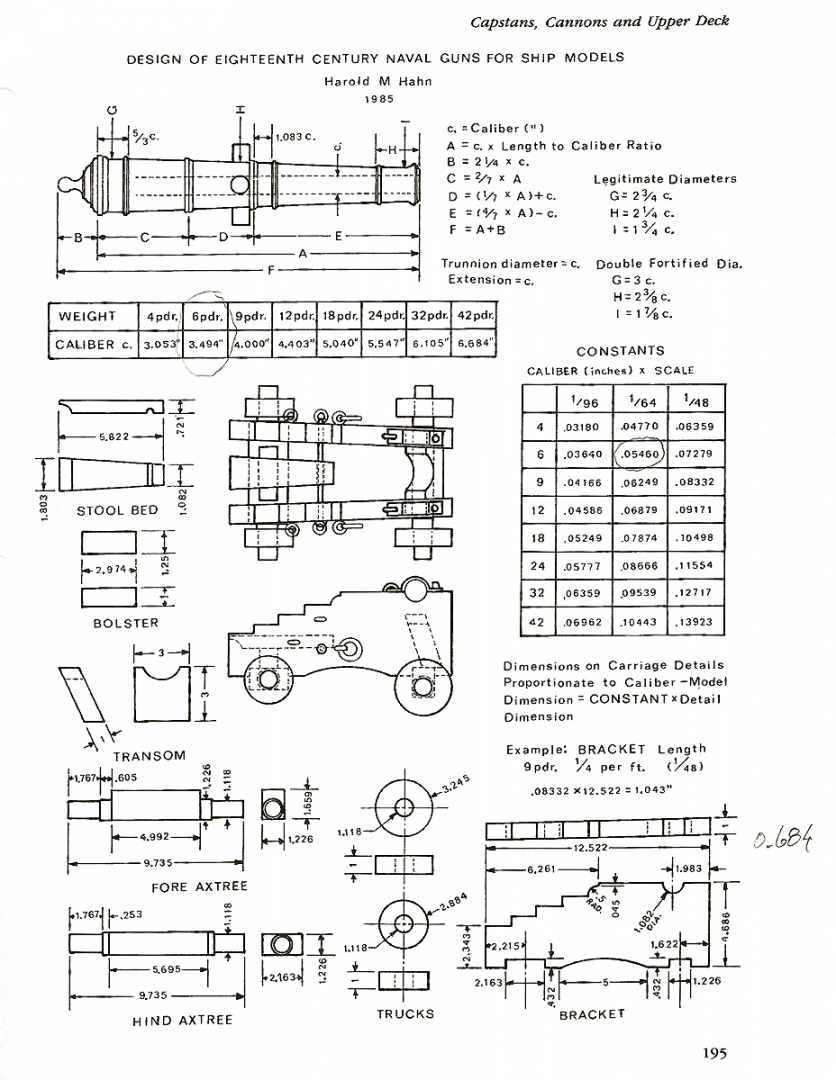
rraisley
Members-
Posts
80 -
Joined
-
Last visited
Content Type
Profiles
Forums
Gallery
Events
Everything posted by rraisley
-
I do agree, Morgan, and that is a concern. However, a search of the Net will find dozens of carriage plans, most of which referring to the recommended plans by Robertson, and later elaborated on and copied by Hahn. Not one I have found has been specific to HMS Victory. Whereas Bugler has fairly well detailed drawings, with dimensions, and elaborate text specifying thickness of material, bolts, cheeks and more, even including what wood was used. Was he measuring the "right" or "correct" gun at the time? One would hope so, given he checked dates on cannon barrels, and seemed to know which were from Trafalgar, which were not original, etc. All I can say is that "he was there", and made decisions, not on his own, but with the assistance of the committee. Yes, I know there were many compromises on the restoration. But with true, correct examples to use, why use others? I'm confident he made the best decision with information available at the time, and today we lack that information. I'm not saying he was absolutely correct; I'm saying that, to my knowledge, no documented dimensioned drawing of Victory guns exist, other than his. Why would that make it more believable that the design is wrong, rather than right? I would LOVE to see additional information on Victory's guns. But no one has sent me any, and I haven't been able to find it. Lacking any contradictory information, I'm proceeding with what was authorized and published by someone far closer to the project, and the guns, than we can ever be.
-
I wouldn't call this a "mocked up carriage". It is modeled after drawings made from actual HMS Victory guns and carriages on the Victory during the time of the 20s refit by people interested in preserving history and taking their work quite seriously. This study and publication by Arthur Bugler, who apprenticed on the Victory in 1918, is considered the bible as far as HMS Victory information, selling for over $500 today, and he had the full support, assistance and record of the HMS Victory Society during his work and book publication. As to the trunnion diameter, they do note 6" diameter on the plans, while some sources list 6.105" as the bore and trunnion size for a 32-pound and others as 6.41". If 6.105", they could have written 6" as it is quite close; but both McKay, Bugler and other sources indicate that the carriages for the 32-pound and 24-pound were identical. The additional breadth for the breech ring and other barrel dimensions isn't as much as you'd think. First, the carriage is sized to fit the 32-pounder, so has no problem fitting the 24-pounder, which is 1.31" smaller in diameter at the breech and 0.89" smaller at the trunnion. Yes, most of Victory's guns today are from other sources or reproductions, but in fact during the refit there were 9 original 32-pounders and three original 24-pounders. All dimensions at the time were taken from originals, both to document actual dimensions and layout as well as to provide a guide for production of reproductions. As I first posted in this topic when I started, if you or anyone else has dimensioned drawings and layout specific to original Victory guns, I would love to see them. The ones I am using are the only ones I know of. Comparing them and denigrating their design because of knowledge from other sources does not make them wrong.
-
While I can't produce DXF or DWG files, I can produce PDFs. This is the project for the 32-pounder to date. I believe the barrel to be pretty accurate and the carriage as well, although I haven't yet put detail to the carriage, such as bolts, chamfers, capsquares, etc. The outline and such is about the best I can do at this point, and think it is quite accurate. I'll attach scale PDFs in a number of scales. Bugler 32-Pounder Views 1-24 Hidden.pdf Bugler 32-Pounder Views 1-24.pdf Bugler 32-Pounder Views 1-48.pdf Bugler 32-Pounder Views 1-72.pdf Bugler 32-Pounder Views 1-98.pdf
-
The free-for-hobby use version that I have does not export export dwg or dxf, or I think any 2D files. I'm not doing "blueprints" with dimensions. But I'm happy to make scale PDFs or bitmaps, and can send screen captures of my sketches showing dimensions. BTW, the statement I made that you quoted is when I was working on the Hahn/Robertson style carriage, probably most used by hobbiests, but not apparently on the Victory. I'm working on the Victory carriages now, using Bugler's drawings which mostly agree with McKay.
-
The carriages on the Victory are described in Arthur Bugler's HMS Victory: Building, restoration and repair, Chapter 5, Restoration details: as identical for the 32- and 24-pounders, but quite different for the 12-pounder. Both 32- and 24- are noted as having 6" trunnions, and a complete description mentions the cheeks as being 5.5" thick. Yes, I know those dimensions are different than the "standard" proposed by John Robertson in 1775 and most often used in modeling, but all dimensions and arrangement are based on actual measurement of guns from the Victory in 1922. Apparently the Victory's guns were quite different than those normally modeled. But this is the only document, dimensioned, fully-described and drawing source for Victory's guns, at any period. As stated many times, if you or others have other information specific to Victory, I'd love to see it.
-
For those interested in the exact profile, we have come up with the following sketch showing the side view profile of the 32- and 24-pounder brackets for HMS Victory's main guns. As mentioned above, this is based mostly on Bugler's dimensioned drawings made during refit of the Victory, confirmed with McKay's drawings, which appear almost identical, and should represent actual gun measurements of Victory weapons "at some time". I can't be specific as to era or manufacture, only that people working on Victory felt this the best representation of this gun, so that's what we're going with. Corrections are always appreciated, but before-the-fact corrections are always appreciated more than after-the-fact. 😉 This drawing does not show the axtrees or other details, not the cutouts in the axtrees for such items, but we wanted to get a firm outline before doing down this new path:
-
Yes, I get that. Turns out (and many may already know this) but Harold M. Hahn was/is a highly skilled modeler during the sixties to near 2000. His drawing on carriage dimensions was, I am certain, based on John Robertson's 1775, London book The Description of Ship-Guns and Sea Mortars. In it is a larger table with identical dimensions to Hahn's for a carriage whose proportions were based on the caliber size of the gun. The intent was to establish standards for manufacture, although they were obviously not universally (or even often?) adopted. Some of the nicest models I've seen seem to follow this drawing, however, and that is what I used for my first 3D model and pics early in this topic. The Victory's cannon, as described by McKay and Bugler (whose sources I am using) describe much lower profile carriages, with smaller wheels, lower brackets, axtrees mounted deeper into the brackets. Those are the sources I am using for my Victory Gun Project, and will continue to until/unless I receive information that is contrary to those sources. The current Victory had no cannon on it when refit in 1920 (I believe), but no doubt some original guns were saved and mounted, in addition to guns from other sources as well as reproductions. How many of those look like originals (from whatever era being modeled), I have no idea.
-
I've completed a basic 3D model of the assembly. Lots of detail to add, but this is what I've got for the basic shape and size. I'll show a couple 3D views and attach a PDF drawing which when printed full size will give views at 1/24 scale for detail. Please let me know what you think, good or bad, as to the accuracy of the drawings. New Design 1-24.pdf
-
I have completed the 2D drawing of the carriage for the Victory's 32- and 24-pounder guns. This view and dimensions will be used to extrude/produce the side brackets and the appropriate angle, with all cuts being perpendicular to the barrel, or parallel to the trunnion. The 2 sources I am using do not include the small 1/2" step down from the top before the radius to the topmost step, so I have not included it here (even though Hahn and many Victory photos show it). Here is the sketch dimensioned full size: I will be constructing the model with the side brackets being 2 pieces, split along the line shown above, from the first step, parallel to the top. I will also be placing 1/2" chamfers all around, with slight rounding in other places, and make the brackets 5 1/2" thick. As stated above, if anyone has additional information, especially contracting information, concerning this project, carriage in particular, you can save me a lot of time by responding sooner rather than later.
-
By the way, I have completed the carriage model posted further above, which I believe to be a quite accurate model of the Hahn carriage, including most hardware. I can post 3-views of it in any scale, or post a 3D model in the file formats shown below: While the STL file can be used to make a 3D model, I can tell you from experiences that it is too detailed with loops and such for a small scale printout, even for a quality resin 3D printer, which my son has. 1/48 scale /may/ work. 1/98 does not. 1/72, doubtful. Although it could be simplified by taking off the problem areas, like the loops and long, thin bolts. Everything is drawing full size, so all drawings and models can be scaled to any size and scale. Sorry, but I cannot supply DXF files; Fusion 360 is unable to create them, and I cannot take the time to do annotated drawings. Especially of something I'm not using.
-
While I was really pleased with the carriage I posted above, based on the drawing by Harold M. Hahn, I have found no confirmation that this exact design was used on the Victory. Several designs are currently on the Victory and on land offboard, with specific information on dimensions and such. In fact, other than photographs, I only have two sources for what the 32-pounder carriages actually looked like: HMS Victory: Her Construction, Career and Restoration by Alan McGowan: Dimensioned drawings with construction details for the 24 & 32-pounder and also the 12-pounder are shown. The drawings aren't complete, but give quite a bit of information and many important dimensions. The 100-Gun Ship Victory by John McKay: This book has good 1/48 scale views of all gun sizes. I've made CAD drawings from the McGowan book, and then compared the result with the drawings in the McKay book, and found extremely good correlation between the two. About the only difference noticeable is that the McKay's 32-pounder carriage scales about 1.5" shorter than McKay's drawing indicates. But two fairly complete sources, both specific to the Victory, is a good start. Lacking anything else, I will proceed with this project using these sources. I call on you, if you have any additional information, agreeing with or contrary to the above sources, relating to the Victory's guns, would you please notify me. You can post here for all to see (I'd like this to be a group project, or at least one in which the group agrees), then great. Or if you don't want information displayed publicly, you can email me at rraisley@bellsouth.net. I promise not to distribute information given me in confidence without permission. While details of these specific guns are great, most important at this time is getting the shape, size and components of the carriage down correctly. I'd love to hear as soon as practical of any additional information that would help me. I will try to post drawings or images of my work as I go along to keep you up to date. And I'll be asking many more questions I hope you will be able to help me with. Here's what I have so far, based on the combination of McGown and McKay information: The squares in the above drawing are 10" x 10".
-
In an effort to create accurate guns for my Corel 1/98 scale Victory cross section, I've been doing a lot of research and have used various tables and drawings I've found on the Net to make a 3D model in Fusion 360. I made a VERY nice looking model (shown below) only to find that while it matched many sources in dimensions and layout, it did not match the 32-pounder on the HMS Victory. I do have some specific information on the Victory's guns: Page 104+ of Longridge's The Anatomy of Nelson's Ships Pages 96 and 97 of McKay's Anatomy of the Ship: The 100-Gun Ship Victory A scan of a page with cannon and carriage dimension restoration details (source unknown) Scans of the barrel details and dimensions for Blomefeld cannon that I feel good about and think should work. Could you at MSW, with your wealth of detail and knowledge and construction and, yes, even computer-aided drawings, assist me in obtaining more information necessary to construct a final and accurate 3D model of these guns? Of the carriages in particular. I can improvise such details as Capsquares and such, but particulars about the Axtrees, Bolster, Stool Bed, Quoin, Transom, Bolster etc. dimensions, usage and arrangement, along with hardware and such would be extremely helpful. Yes, I can make a basic block that will match published dimensions, but I'd like to have it as through and accurate and complete as possible. In appreciate of this information, I would make the 3D model and various 2D views available to anyone who would like them. I can't do DXFs with this software, but PNG files can be imported or resized as desired. Responses are welcome here. Any information you would like to give me but prefer not to post or make generally available please email to rraisley@bellsouth.net. I will NOT give any of this information to anyone else, but use it only for my needs for this project. Thank you in advance. Here are shots of my model of the barrel (close I think) and carriage) definitely wrong, to see what I'm trying to do, but more accurately.
-
Well, I drew up the 32-pounder barrel in Fusion 360, using parameters to change the -pound size, and using McKay's book enlarged for size and shapes. I think it came out reasonably well thus far and detail is reasonable, considering it will be 1.3" (33 mm) long. I noted above that the McKay barrel diameter is substantially larger than even Hahn's table for Double Fortified diameters. I then used Hahn's table and drawings to do the carriage. Surprisingly, there are a couple of things missing on the drawing: Location of the cannon trunnion, which I scaled from McKay's drawings. The other was the width of the sides of the carriage which includes the angle of the sides. I assumed that the square portion of the axles would be flush with the side at the widest portion (rear) of the axle cutouts in the side. Overall, I think it's coming well. However, as I did the barrel and carriage in separate files, and only recently put them together, I really think the barrel diameter is too small for the carriage. So, I'm left with the question: Did Nelson have super fat/strong barrels and widen the carriages to fit? Or is McKay's drawing wrong, and Nelson had standard cannon diameters, probably the Double Fortified version? As before, if anyone has details or information showing actual barrel flare, breech doming, reinforcing band size & configuration, or anything else relating to this, I'd love to have it. I'm drawing the gun up "full size", and will be making some for my Victory cross section in 1:98, but also want to make a desktop version about 6" long. And I hate to put the time into drawing something that is a "guess" in many ways.
-
Thanks so much, everyone. I was heading toward the "length" being just to the breech, rather than overall, and this confirms it. The only other discrepancies I see between "standards" and McKays drawings are: The 32-pound and 24-pound use EXACTLY the same size carriage, which is not standard as far as I can tell. All the barrels are shown "fatter" than one the Hahn table. Dimensions for G & I: Hahn Standard: G = 2.75 x C, I = 2.75 x C Hahn Double Fortified: G = 3 x C, I = 2.875 x C McKay 32-Pound: G = 3.30 x C, I = 2.10 x C McKay 24-Pound: G = 3.4 x C, I = 2.14 x C McKay 12-Pound: G = 3.64 x C, I = 2.36 x C Were there even heavier/thicker cannon than the Double Fortified ones that could explain it? Nelson did have the latest and greatest, I think, what with Flintlocks and all. I know I'm getting nit-picky on this stuff. But when I'm taking the time to ACCURATELY model the cannon and carriages in full size, and then create resin 3D models for my model as well as maybe larger ones for my desk, I'd like them to look as accurate as possible. I'm even trying to research the size and shape of the reinforcing bands, the muzzle end flare, etc. A lot of the old books referenced at this site show them in fold-out sheets, but they've been copied without being folded out, so are difficult to tell. I thought sure I'd find a blueprint of an exact copy of at least one of the guns, that someone has documented to make a large scale, firing replica of, but no luck so far.
-
Thanks for answering. I'm modeling the era where the lower deck had 32-pound long guns, the middle deck 24-pound long guns and the upper gun deck 12-pound long guns. That's all that is shown in the cross section. My problem is I see lots of documentation that the 32-pounders were 9.5' long, yet McKay's fine book shows them as 10.62'. And it shows the 24-pounders as being the exact same length (just smaller in diameter). This conflicts with the published values of 9.5', yet McKay is the bible, right? McKay also shows the diameter of the barrels as being larger than the chart above, even when using the Double Fortified diameter values. Is it possible that cannon length refers to the A value on the chart above, and not the F value which includes the B dimension of the base and button? If so, that would explain the length McKay shows for the 32-pounder. And as the barrel lengths are the same, the 24-pounders must be 9.5 feet long too, measured to A.
-
(Inserted) While this topic started as a question about barrel length, it has ended up being a research project in order to construct as accurately as possible 3D models of Victory's primary 32-, 24- and 12-pounder guns. You may want to skip down to later posts as the thread evolves, and I'm happy for anyone to contribute information to this project. I'm building the Corel HMS Victory Cross Section, trying to put some extra detail in (iron plates for ballast, more "furniture", etc. My son has both a filament and resin 3D printers, so he's made some detail parts. I've had some problems getting the cannon to look the way I like, and after researching, realized that the supplied cannon of 35, 30 and 25mm in length are absolutely not to scale, using any source at all. And since I can't buy cannon that are quite right, and as I'm a retired engineer with a son with a 3D printer, I figured I'd draw them up myself and have him make them. The question is: What size? I bought John McKay's book The 100-Gun Ship Victory and it has excellent 1/48 scale views of the three cannon sizes within the cross-section (12, 24 and 32-pounders). I figured I'd enlarge those to an easily-measured size, and use it for making the CAD model, then print them the same size. Great. But in the process of other research, I find that most ships-of-the-line cannon of a 32 pound size should be 9' 6" long. This is confirmed by a number of sources, including House of the Orange Monkey. And in fact, it appears all 3 sizes of guns are 9' 6" long. Well, McKay's book scales them as 10' 7" for the 24 and 32s, and right at 10' for the 12 pound. The 12-pound MEDIUM gun used on the forecastle scales 9' 6" long and the 12-pound Short gun on the quarterdeck scale close to 8' 6" long. Anyhow, can anyone confirm the actual barrel length of the Victory's 3 main long guns? Also, the scale drawings show the carriage for the 32s and 24s as being identical, in design and size, yet the tables I've seen show different sizes for them (always scaled to the barrel length). I've been looking at this table: and it includes a lot of great information, but NOT the length of the barrels, except related to the Length to Caliber Ratio, which is stated nowhere. Does it vary with bore? It would vary with Long, Medium and Short, but I see no values to accompany the tables. Also, how are cannon lengths calculated? In the above, would that be dimension A, or dimension F? As, for a 32-pounder, D is 2.25 x 6.105" = 13.7", adding that to 9' 6" comes up to my measured 10' 7" (?). Anyhow thanks in advance for any ideas, and MERRY CHRISTMAS! 🙂
About us
Modelshipworld - Advancing Ship Modeling through Research
SSL Secured
Your security is important for us so this Website is SSL-Secured
NRG Mailing Address
Nautical Research Guild
237 South Lincoln Street
Westmont IL, 60559-1917
Model Ship World ® and the MSW logo are Registered Trademarks, and belong to the Nautical Research Guild (United States Patent and Trademark Office: No. 6,929,264 & No. 6,929,274, registered Dec. 20, 2022)
Helpful Links
About the NRG
If you enjoy building ship models that are historically accurate as well as beautiful, then The Nautical Research Guild (NRG) is just right for you.
The Guild is a non-profit educational organization whose mission is to “Advance Ship Modeling Through Research”. We provide support to our members in their efforts to raise the quality of their model ships.
The Nautical Research Guild has published our world-renowned quarterly magazine, The Nautical Research Journal, since 1955. The pages of the Journal are full of articles by accomplished ship modelers who show you how they create those exquisite details on their models, and by maritime historians who show you the correct details to build. The Journal is available in both print and digital editions. Go to the NRG web site (www.thenrg.org) to download a complimentary digital copy of the Journal. The NRG also publishes plan sets, books and compilations of back issues of the Journal and the former Ships in Scale and Model Ship Builder magazines.


